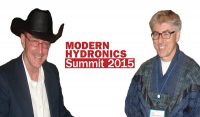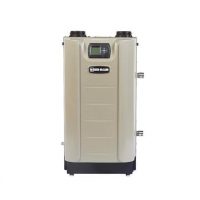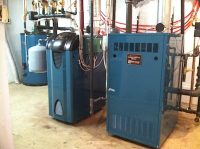Check out Modern Hydronics – Summit 2015 for a one-of-a-kind conference and trade show dedicated exclusively to the hydronics market. Conveniently located at the International Centre by Toronto’s Pearson Airport, you’ll see demonstrations of the latest technologies and products from industry leading manufacturers, learn from informative speakers, network with colleagues and experts, enjoy lunch, dinner and Read more
Hydronics

Check out Modern Hydronics – Summit 2015 for a one-of-a-kind conference and trade show dedicated exclusively to the hydronics market. Conveniently located at the International Centre by Toronto’s Pearson Airport, you’ll see demonstrations of the latest technologies and products from industry leading manufacturers, learn from informative speakers, network with colleagues and experts, enjoy lunch, dinner and drinks. Modern Hydronics – Summit 2015 is Canada’s only hydronic-exclusive event. Don’t miss it!

The low-down:
• When: Sept 10 from 10AM to 8PM
• A conference pass ($149 Cdn = roughly $104 U.S.) covers: lunch, dinner and a drink along with all sessions and, of course, the exhibits (50 exhibitors).
• The sessions will be handled contributors, including John Siegenthaler and Robert Bean. They have solo sessions as well as a Siggy and the Bean session to kick the conference off.
• The International Centre is right by Toronto International Airport and there are many hotels close by.
For information, www.modernhydronicssummit.com

A new speaker to our Coffee with Caleffi™ webinar series, Jim Meseke, Director of BIM Content at ENGworks, will share his 21 years’ of AEC expertise on Thursday, Aug. 20 at 12 noon CDT discussing How to Utilize BIM in Hydronic System Design. Meseke will walk the audience through what BIM is and its capabilities Read more
A new speaker to our Coffee with Caleffi™ webinar series, Jim Meseke, Director of BIM Content at ENGworks, will share his 21 years’ of AEC expertise on Thursday, Aug. 20 at 12 noon CDT discussing How to Utilize BIM in Hydronic System Design. Meseke will walk the audience through what BIM is and its capabilities, the differences between BIM in comparison to conventional CAD and discuss where BIM is heading in the future. He’ll demonstrate how to obtain and implement Revit content.

Responsible for managing BIM content projects and innovating modeling techniques, Meseke provides quality assurance for the content at ENGworks. The ENGWorks team is well recognized internationally as a top provider of Revit models for mechanical, electrical, plumbing and fire protection products.
The one-hour educational webinars are free and are intended for contractors, designers and wholesalers. Please visit our website at www.caleffi.com for schedule details and registration.

Weil-McLain® now offers its most advanced high-efficiency condensing boiler. The new 95% AFUE Evergreen™ boiler features cutting-edge technology with simple controls, flexible functionality for multiple applications and a durable design, and is easy to install, use and maintain. The unit is adaptable for most heating needs including light commercial or large residential applications and for Read more
 Weil-McLain® now offers its most advanced high-efficiency condensing boiler. The new 95% AFUE Evergreen™ boiler features cutting-edge technology with simple controls, flexible functionality for multiple applications and a durable design, and is easy to install, use and maintain.
Weil-McLain® now offers its most advanced high-efficiency condensing boiler. The new 95% AFUE Evergreen™ boiler features cutting-edge technology with simple controls, flexible functionality for multiple applications and a durable design, and is easy to install, use and maintain.
The unit is adaptable for most heating needs including light commercial or large residential applications and for single or multi-boiler installations. Evergreen offers quiet operation, an aesthetically pleasing design, floor standing or wall mount options and environmental sustainability.
The boiler’s straightforward and user-friendly design makes installation easy for the contractor, installer or service provider. The unit features a guided setup wizard, an easy to understand graphical user interface, simple controls and 10 heating system presets for quick setup.
For the homeowner who seeks heating comfort while maintaining lower utility bills and a reduced carbon footprint, the Evergreen features an AFUE rating of 95% and was recently designated as Most Efficient 2015 by ENERGY STAR®, a new distinction that recognizes highly efficient products.
For the residential and light commercial customer who requires a multiple boiler setup, the Evergreen offers the ability to cascade eight boilers together and ZoneStacking™ up to 24 programmable zones with no external panel required.
ZoneStacking reduces the installation costs and time while increasing reliability. With this advanced control feature, the Evergreen boiler maintains optimal efficiency through lead-lag rotation and balanced heat loading.
In commercial applications, optimal energy efficiency yields reduce energy costs with up to 96.5% combustion efficiency. The SmartSequencing feature maximizes energy across all boilers on a system, reducing energy costs. The unit also is certified as low NOx by the South Coast Air Quality Management District (SCAQMD) with less than 20 ppm.
The flexibility of the Evergreen boiler system reduces setup time and costs as well. Three multiple-boiler sequencing options include smart mode, series mode and parallel mode.
Other key features include:
- Stainless steel, fire-tube heat-exchanger with non-metallic base
- 10 to 1 turndown ratio
- Modbus® communication
- Natural or propane gas
- Easy to use setup wizard on familiar interface with innovative technology
- Interactive diagnostic capability
- Sleek, modern design adds aesthetic value to property
- Three available sizes of 220MBH, 299MBH and 399MBH
Additionally, the Evergreen boiler’s compact design offers maneuverability in tight installations, eliminating extra rigging costs. The unit is completely packaged and tested at the manufacturing facility before shipping. No jobsite assembly is required.
For demanding hot water applications, the high performance Evergreen boiler pairs seamlessly with the efficient and durable AHRI Certified™ line of Weil-McLain AquaPlus™ Indirect Fired Water Heaters.
To learn more about the Evergreen boiler visit http://evergreenboiler.com/ or contact a Weil-McLain regional sales office at www.weil-mclain.com/en/weil-mclain/about-us/locations/.

Long Island’s rich hydronic heritage can be seen in the houses that cover the island, as well as the plumbing and heating shops that serve them. Common is the moderately sized, turn-of-the-century house that’s seen addition after addition, with as many changes to the heating system. The family-owned hydronic shops run by passionate “wet-heads” continue Read more
Long Island’s rich hydronic heritage can be seen in the houses that cover the island, as well as the plumbing and heating shops that serve them. Common is the moderately sized, turn-of-the-century house that’s seen addition after addition, with as many changes to the heating system. The family-owned hydronic shops run by passionate “wet-heads” continue to leave their mark on the heating landscape.
Hunter Botto will be the first to attest to this. He and his brother, Roger, are third generation owners of Botto Bros. P&H, in Hicksville, NY. Their grandfather started the company in 1937, and they purchased ownership in the ’80s. Today, it’s a 10-person, multi-faceted firm that’s commercially and residentially focused. Plumbing and heating is their bread and butter, but kitchen and bath remodels and generator installations keep them busy year-round.
“One thing we’ve found is that diversifying helps build a bigger network of clients,” said Hunter. “We’ll land a remodeling job, and later in the year they’ll call us back to service a boiler or install a generator.”
In early February, Botto technicians were completing a generator installation when the owner asked them to check their radiant heating, and if a gas $1,400 gas bill was normal for a 3,500-square-foot home in January. When they stepped into the home’s mechanical room, what they found was so bizarre that they texted Hunter a bunch of photos.
Steam to radiant disaster
The circa-1910 house had been expanded and remodeled a number of times, with the heating system constantly gaining complexity. The original cast-iron steam radiation was accompanied by a jumble of air handlers and two different in-floor systems, none of which operated properly. The floor didn’t heat well, and the two-pipe steam system was banging. Oddly enough, the entire system was served by one oversized steam boiler.

A Burnham Independence supplies steam to cast-iron radiators, while an ES2 heats in-floor zones and DHW via a Burnham Alliance sidearm tank.
“I had to check it out myself,” said Hunter. “The boiler – which was 20 years old – was twice the size it needed to be. There was no proper equalizer; the four-inch header went right into the boiler, and three, two-inch supplies Teed off the big main. But it gets better.”
“Instead supplying DHW, the steam boiler’s internal coil was piped out to a 30-gallon buffer tank – which was just an old indirect-fired water heater. A circulator moved water from the tank to two radiant supply manifolds; one which supplied PEX under the marble kitchen floor, another for a staple-up zone in the dining room. The PEX didn’t receive the flow or temperature it needed. DHW was supplied by an old gas-fired water heater, and an upstairs den was heated by a single gas-fired air handler.”

Because the home uses both water and steam heating elements, Botto Brothers used two boiler to share the load.
During Hunter’s visit, the homeowner decided she wanted to lower her fuel bills and restore heating function by replacing the system. To hold her over for a few weeks until they could design and install a new system, Hunter de-rated the existing boiler to 50 percent of its 300,000 BTUH capacity. He then completed a heat load calculation in the rooms with radiant heat, and measured the radiators.
Share the load
“Instead of converting the radiators to water, we decided to divide the load between a new steam boiler and a new water boiler,” said Hunter. “We started on February 17th and finished five days later. The homeowner headed to Costa Rica during the process, which made life easier for us.”
Once the old boiler was removed, Botto Bros technicians Mike Depaulis, Bryan Scheafer and Brian Single installed a 105 MBH, natural gas-fired Burnham ES2 water boiler. The unit now supplies DHW via a 50-gallon, Burnham Alliance indirect-fired water heater, and working heat for the in-floor system.
“The ES2 is a real workhorse,” said Hunter. “Efficient, easy to install, and ridiculously dependable. What else do you want from a boiler?” Updating the radiant system included the addition of a pump; one for each manifold. Mixing valves are now used to temper down the 180°F supply temperature. The kitchen supply temperature averages 115°F, while the dining room – with wood floors – requires 140°F.
After the water side was squared away, they turned their attention to the radiators. Any air vents were removed, and supply valves were replaced. Next to the ES2, a 140 MBH Burnham Independence was installed for the 310 square feet of connected radiation.
“We couldn’t promise the owner of this job tropical weather upon her return, but a comfortable house and a lower heating bill were a given. The project even qualified for a 900.00 dollar rebate from National Grid, the local utility,” said Hunter. “
Worthwhile affiliations
Hunter is a 15-year PHCC member who has served as local and state president, and has been on the National PHCC Board of Directors. Currently, he serves as the local Zone Director.
“PHCC has allowed me to have open communications with contractors from all around the country,” said Hunter. “Over the years, their guidance and recommendations have proven an invaluable asset to have.”

Because of the excellent heat storage characteristics of water, adding thermal storage to a hydronic system lends itself well to many benefits including buffering a heat source against short cycling, reducing the heat source size relative to peak load and optimizing the use of surplus heat production. The 17th edition of idronics™ explores these benefits Read more
Because of the excellent heat storage characteristics of water, adding thermal storage to a hydronic system lends itself well to many benefits including buffering a heat source against short cycling, reducing the heat source size relative to peak load and optimizing the use of surplus heat production. The 17th edition of idronics™ explores these benefits and discusses how to properly apply thermal storage in hydronic systems.
The edition is now available on our website at www.caleffi.com. Subscribers of the journal will receive their hard copy in August. Are you interested in receiving your own complimentary copy? Please register today.



